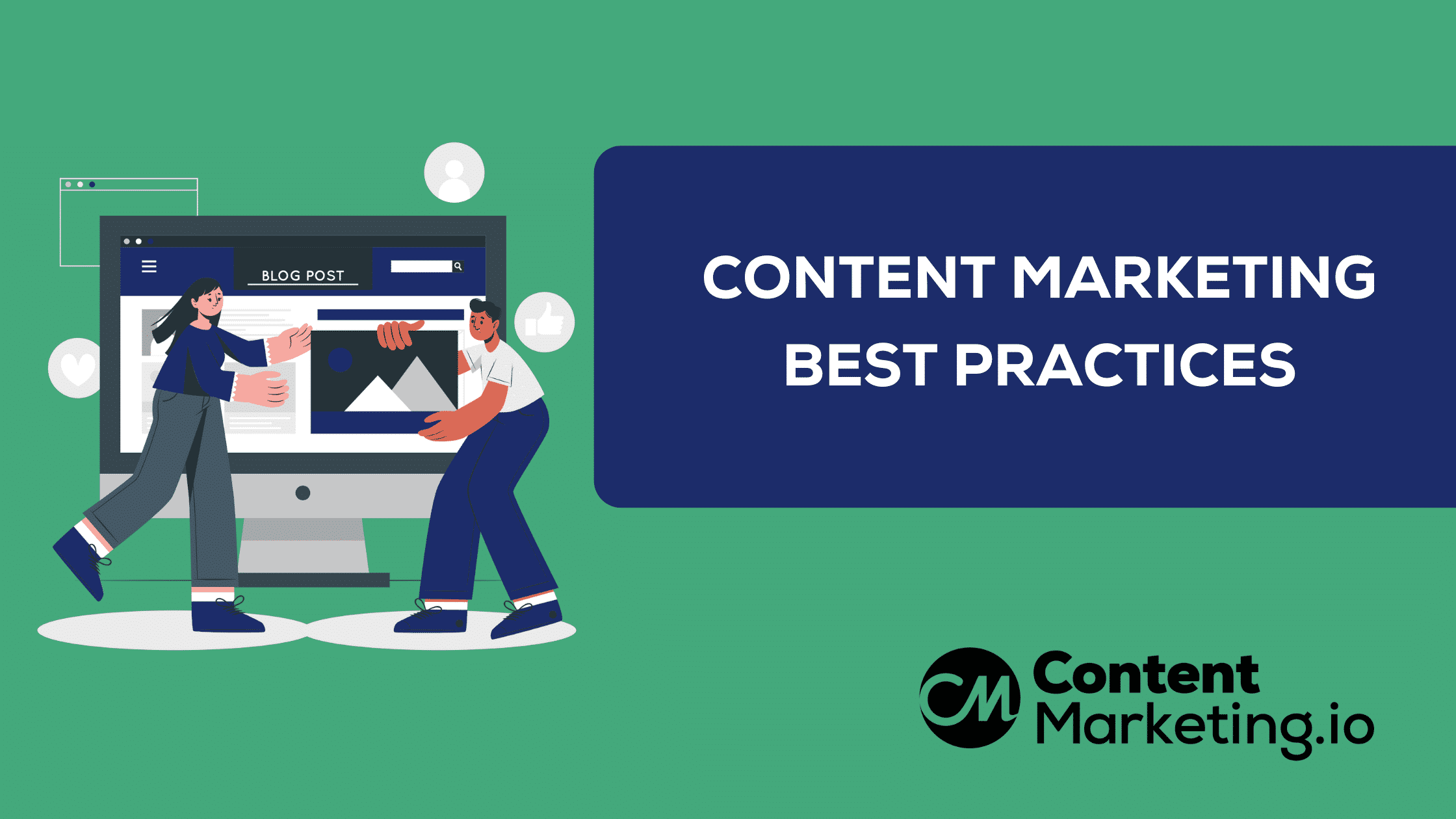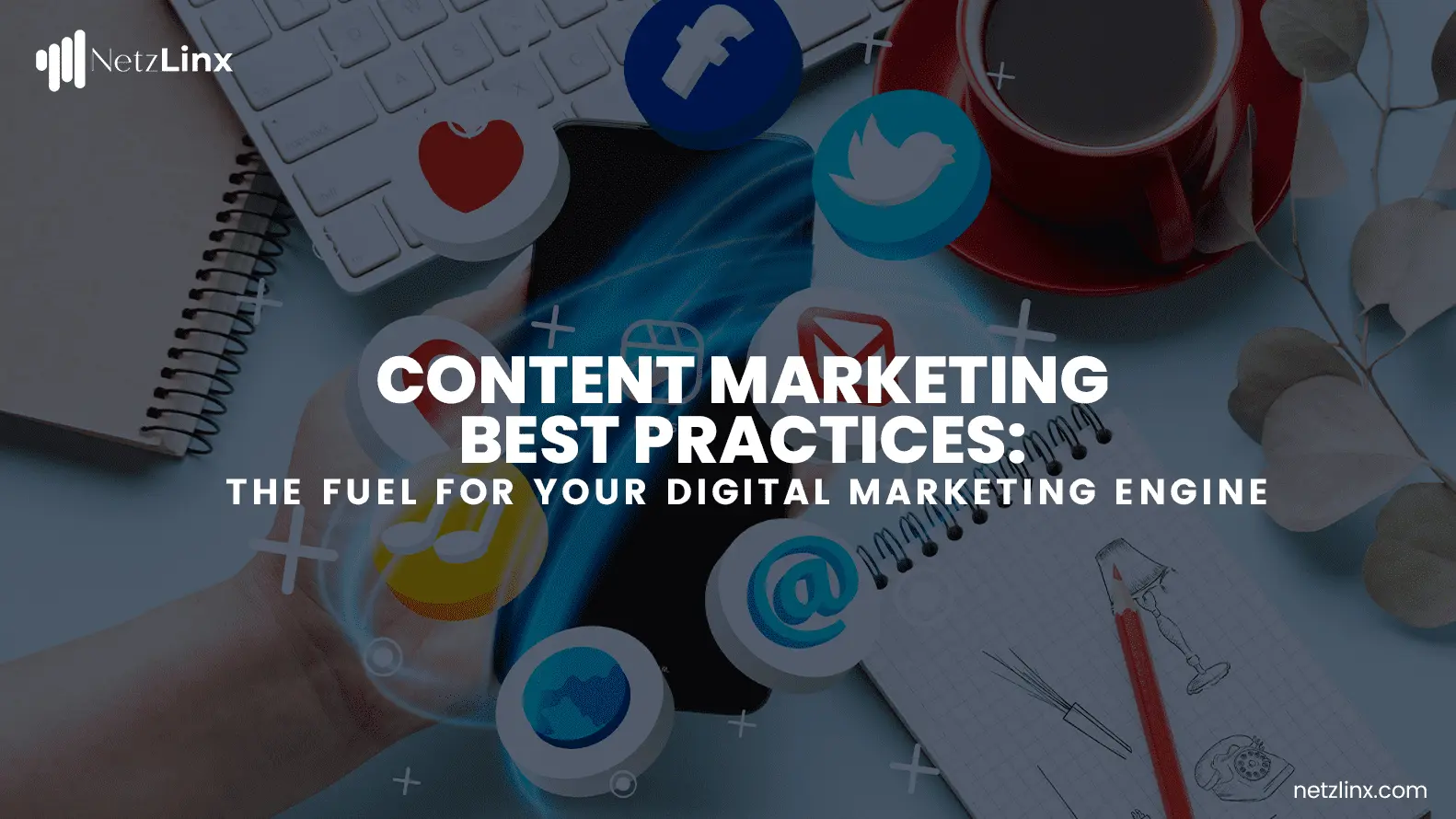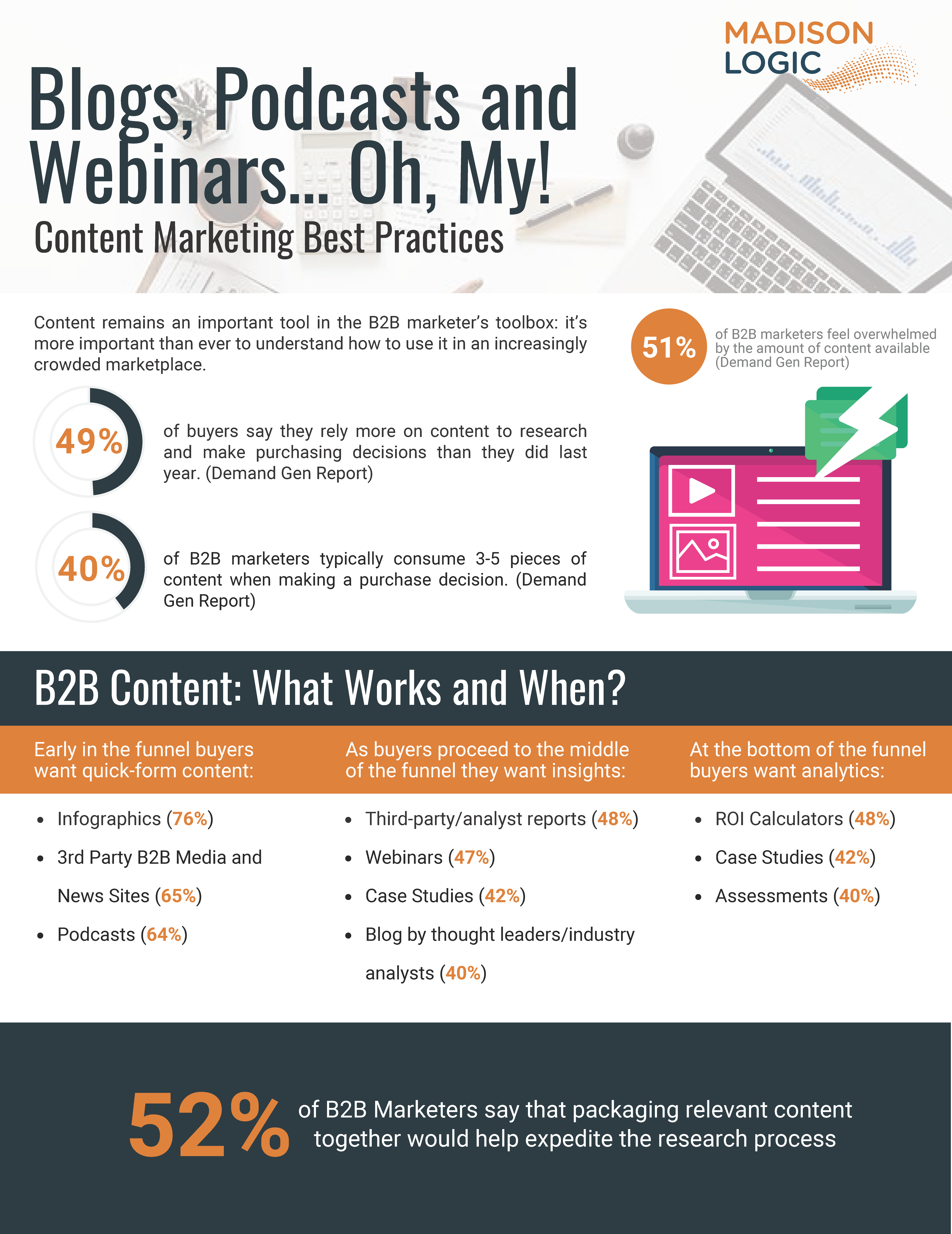Are you looking to truly connect with other businesses and help them see the real value you offer? It’s almost like, in today's busy world, simply having a great product or service just isn't quite enough anymore. You see, getting the attention of other organizations, especially those big ones, takes a thoughtful approach, and that's where content marketing for businesses, or B2B content marketing, really comes into its own. This isn't just about sharing information; it's about building trust and showing you understand their unique needs, too.
This article will walk you through some of the most effective ways to create and share content that truly resonates with your business customers. We'll explore how to craft messages that speak directly to their challenges, offer real solutions, and ultimately help them make smart choices. You know, it's about making your content work hard for you, so it attracts the right kind of attention.
By putting these ideas into action, you can transform how your business communicates with other companies. You'll discover how to become a trusted guide, rather than just another vendor, which is pretty important. We'll show you how to make your content a powerful tool for building lasting relationships and driving genuine growth, too.
Table of Contents
- Understanding Your B2B Audience
- Crafting Compelling Content Types
- Distributing Your Content Wisely
- Measuring What Matters for B2B Content
- The Role of Digital Systems in B2B Content
- Making Your Content Human and Helpful
- Frequently Asked Questions About B2B Content Marketing
- Conclusion
Understanding Your B2B Audience
Knowing who you're talking to is, well, pretty much the first step in any good conversation, isn't it? For B2B content marketing, this means getting a really good sense of the businesses you want to reach. It's not just about company size or industry, you know, but also about the actual people within those organizations who will be reading your stuff.
Think about their daily work, what keeps them up at night, and the big goals they're trying to hit. Are they trying to save money, become more efficient, or perhaps offer something new to their own customers? You see, each of these different concerns needs a different kind of message, and that's rather important.
Consider the various roles involved in a business decision. There's often a team, you know, from the person who first spots a problem to the one who gives the final okay. Your content might need to speak to different people at different stages of their buying journey, so it's a bit like telling a story with different chapters for different readers.
For example, if you're offering a system that helps organizations send and receive important documents digitally, like a National Insurance B2B system does, you'd need to consider who benefits most. The administrative staff might care about ease of use, while a manager might focus on efficiency and security, which is pretty common.
So, spending time really figuring out these details means your content won't just be words on a page. It will be helpful, relevant, and much more likely to grab the attention of those who can truly use what you offer, too.
Crafting Compelling Content Types
Once you know your audience, the next bit is figuring out what kind of content will truly speak to them. It's not just about writing; it's about choosing the right format and style to deliver your message, you know? Different situations call for different kinds of stories, and that's a pretty big deal.
For businesses, the content needs to be informative and practical. They're often looking for ways to solve real problems or improve their operations, so, you know, they want solutions, not just fluff. Here are some types of content that generally work really well.
Educational Resources
Think of your content as a helpful guide. Businesses appreciate learning something new or getting a better handle on a complex topic. This could be in the form of detailed guides, how-to articles, or even short, informative videos. For instance, if you offer a digital service for sending documents, like the one that lets you send payslips or claims to a National Insurance official, an educational guide on "How to Easily Submit Your Documents Online" would be incredibly useful, you know.
These resources build trust because you're giving value without immediately asking for something in return. You're showing your expertise and, in a way, helping your potential customers become more knowledgeable. This approach really positions you as a helpful partner, which is rather nice.
Webinars and online courses can also fall into this category, offering a deeper dive into a subject. They allow for interaction and can address specific questions, making the learning experience even more personal and engaging. People often appreciate a chance to learn directly, too.
Case Studies and Success Stories
People, even in business, love a good story, especially one where someone overcomes a challenge. Case studies are like real-life examples of how your product or service helped another business achieve something great. They show, rather than just tell, the benefits you offer, which is pretty effective.
When you share how a company used your solution to, say, streamline their document submission process, or perhaps saved a lot of paper by going digital, that's a powerful message. It gives others a clear picture of what's possible for them, too. Make sure to include actual results, like "reduced processing time by 30%" or "saved X amount in printing costs."
These stories build credibility and make your claims feel more real. They help potential customers imagine themselves achieving similar results, and that's a very compelling thought. So, don't be shy about sharing those wins, you know.
Thought Leadership Pieces
Being a "thought leader" means you're seen as an expert in your field, someone who has new ideas or a unique perspective. This kind of content isn't about selling directly; it's about sharing insights, predictions, and opinions on industry trends. For instance, you might write about the future of digital document exchange for businesses, or how new regulations will impact payment processes, which is pretty interesting.
Blog posts, whitepapers, and articles published in industry publications are common formats for this. They show that you're not just selling something, but that you're deeply invested in your industry and understand its bigger picture. This helps you stand out from the crowd, you know.
When you consistently share valuable insights, other businesses start to look to you for guidance and information. This builds a strong reputation and can lead to more opportunities down the road. It's about being a trusted voice, too.
Distributing Your Content Wisely
Creating great content is only half the battle, you know. The other half is making sure the right people actually see it. It's a bit like baking a wonderful cake but then keeping it hidden in the kitchen; nobody gets to enjoy it! So, getting your content out there is pretty important.
For B2B, this often means using channels where business professionals spend their time. LinkedIn, for example, is a natural fit for sharing articles and insights. Email newsletters are also incredibly effective, allowing you to send your valuable content directly to interested parties, which is rather convenient.
Consider industry-specific forums or online communities where your target audience gathers. Sharing your expertise there, in a helpful way, can bring new eyes to your content. It's about being where your audience already is, you know, rather than waiting for them to find you.
Don't forget the power of search engines. Making sure your content is easy to find when someone searches for solutions to their business problems is key. This involves using the right words and phrases that your audience would search for, like "b2b content marketing best practices," so your content shows up when they need it, too.
Finally, encourage sharing. If your content is truly helpful, businesses will often share it within their own networks, expanding your reach naturally. It's like a ripple effect, which is pretty neat.
Measuring What Matters for B2B Content
How do you know if your content is actually working? Well, you can't just guess, can you? It's really important to look at the numbers and see what's happening. This helps you figure out what's hitting the mark and what might need a little tweaking, too.
For B2B content, you're not just looking at how many people saw your post. You're more interested in how it helps move businesses closer to becoming customers. Are people downloading your whitepapers? Are they signing up for your webinars? Are they spending a good amount of time reading your articles? These are pretty good signs.
Things like website visits, time spent on a page, and how many times your content gets shared are a good start. But also look at how many leads are generated from a specific piece of content, or how many of those leads turn into actual sales. That's the real measure of success, you know.
If you're using a B2B system for digital services, like sending documents or making payments, you might track how many businesses sign up for the service after reading content about its benefits. This direct connection helps you see the impact of your marketing efforts, which is rather valuable.
So, regularly check your analytics. See which topics are most popular, which content formats get the most engagement, and where your leads are coming from. This information helps you make smarter choices about what content to create next, too.
The Role of Digital Systems in B2B Content
You know, the way businesses interact has changed a lot, and digital systems are a big part of that. Think about how organizations now send and receive important files, like the National Insurance B2B system that lets approved bodies exchange information online. Content plays a very big part in making these systems understandable and useful.
When a business is considering using a new digital platform, they need clear, helpful content to guide them. This includes explanations of how to register, how to get authorization, and what kinds of documents they can send, like claims or payroll slips. This kind of content isn't just marketing; it's essential for adoption and success, too.
Content also helps businesses see the benefits of going digital, like getting personal updates on their phone or email, or joining the "green revolution" by saving paper. These are powerful messages that content can deliver, encouraging more businesses to use digital services, which is pretty cool.
From a broader perspective, B2B platforms, whether they're for engineering products or for managing household worker payments, rely on content to attract users and explain their functions. Content helps businesses find suppliers, understand payment methods (like credit card or bank transfer), and see how these platforms can help them transform their operations. It's rather foundational.
So, good content makes complex digital systems seem simple and appealing. It bridges the gap between the technology and the businesses that need to use it, making the whole process much smoother, you know.
Making Your Content Human and Helpful
Even though you're talking to businesses, remember that there are real people on the other side of the screen. So, making your content feel human and genuinely helpful is, well, rather important. It's not just about facts and figures; it's about connecting with individuals, too.
Try to use a conversational tone, as if you're talking to a colleague or a friend who needs some advice. Avoid overly stiff or technical language that might make your readers feel lost or bored. Your goal is to be approachable and easy to understand, you know.
Share stories, use examples, and address common questions directly. If someone is trying to update their bank details or pay as a self-employed person through an online system, they want clear, step-by-step guidance, not jargon. This shows you care about their experience, which is pretty nice.
Think about the emotional side of business decisions too. Businesses want to feel secure, efficient, and successful. Your content can speak to these aspirations, offering reassurance and a vision for a better way of doing things. It's about building a connection beyond just the transaction, too.
Ultimately, when your content is human and helpful, it builds trust and makes your business stand out. People remember how you made them feel, and that often leads to stronger, longer-lasting business relationships. It's a very powerful approach, you know.
Frequently Asked Questions About B2B Content Marketing
Here are some common questions people often ask about making content work for businesses:
What makes B2B content different from B2C content?
Well, B2B content, you know, is all about helping other businesses solve their problems and make smart choices for their operations. It's usually more formal and focuses on things like return on investment, efficiency, and how a product or service fits into a larger business strategy. B2C content, on the other hand, often speaks more to individual desires and emotions, like personal enjoyment or convenience, which is a pretty big difference.
How often should I create new B2B content?
That really depends on your resources and your audience's needs, you know. There isn't one perfect answer. Some businesses find that publishing new content a few times a week works well, while others might do better with a really well-researched, in-depth piece once a month. The key is consistency and quality over just quantity, so it's better to produce good stuff regularly than lots of mediocre content, too.
What's the most effective type of B2B content for generating leads?
Actually, a lot of businesses find that educational resources like whitepapers, e-books, and webinars are very good for getting leads. These types of content offer a lot of value and often require a visitor to provide their contact information to access them. Case studies and detailed product guides are also quite effective because they show real results and help potential customers understand how your solution can work for them, which is pretty useful.
Conclusion
So, getting good at B2B content marketing is really about understanding your business audience deeply and then creating content that genuinely helps them. It's about being a trusted source of information and solutions, which is rather important. By focusing on helpful, well-distributed, and measurable content, you can build stronger connections with other businesses.
Remember, the goal is to guide them through their challenges and show them the real value you bring, just like a well-designed digital system makes complex tasks simpler. You can learn more about digital solutions on our site, and if you want to see how these practices come to life, check out this page for more practical examples. Keep creating content that truly serves your business customers, and you'll see some pretty good results, too.



Detail Author:
- Name : Miss Marielle Berge V
- Username : botsford.vella
- Email : kwolff@dietrich.com
- Birthdate : 2006-04-28
- Address : 65404 Palma Road Suite 146 Gorczanyberg, MO 55961
- Phone : (712) 888-2933
- Company : Witting Group
- Job : Soil Scientist OR Plant Scientist
- Bio : Ducimus nostrum quisquam consequuntur esse ullam dignissimos consequatur id. Rem non delectus et minima. Dignissimos ducimus voluptatum quas animi nam.
Socials
twitter:
- url : https://twitter.com/madaline_mccullough
- username : madaline_mccullough
- bio : Alias molestiae deserunt ullam cumque vero quis natus laboriosam. Voluptates impedit occaecati molestias vero et ex perferendis. In quia recusandae libero.
- followers : 2132
- following : 1074
tiktok:
- url : https://tiktok.com/@madaline_mccullough
- username : madaline_mccullough
- bio : Sed nulla cupiditate culpa architecto magnam et quae animi.
- followers : 1013
- following : 2932
linkedin:
- url : https://linkedin.com/in/madaline_real
- username : madaline_real
- bio : Quia quos maiores magnam dolores est.
- followers : 6686
- following : 2182
instagram:
- url : https://instagram.com/madaline.mccullough
- username : madaline.mccullough
- bio : Quo qui illum hic numquam rerum. Debitis error impedit deleniti totam quaerat non.
- followers : 630
- following : 2570
facebook:
- url : https://facebook.com/madaline_id
- username : madaline_id
- bio : Ad tempora culpa repellat. Amet rem tenetur unde tempora ut.
- followers : 6072
- following : 336